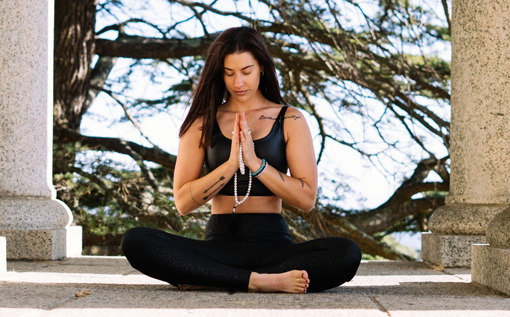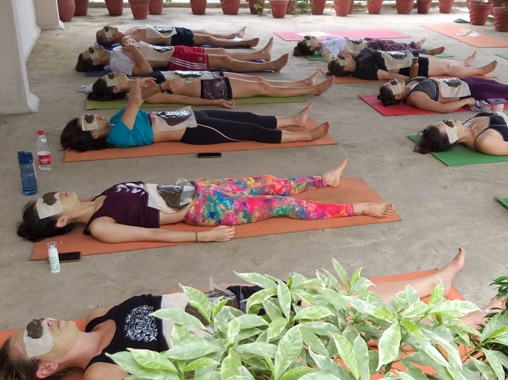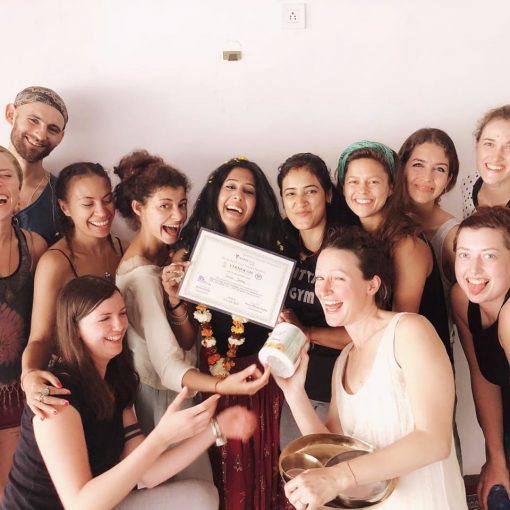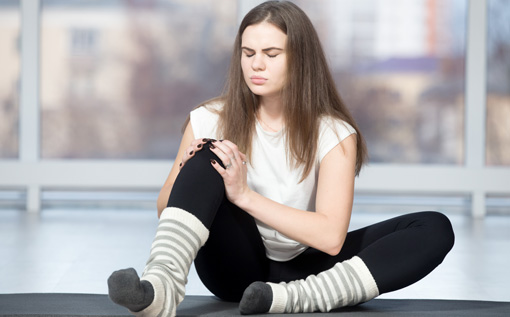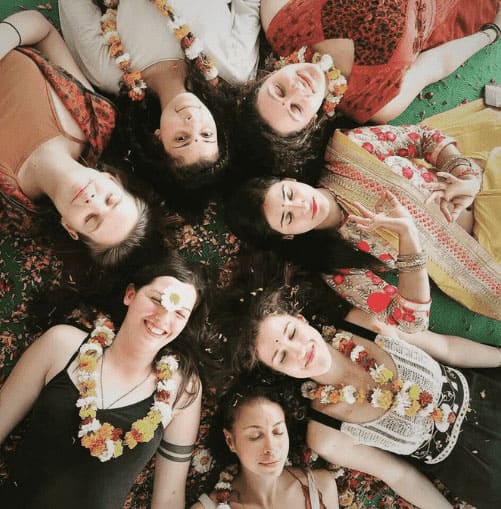Moon salutations, known as Chandra Namaskar in Sanskrit, are a beautiful and serene sequence of yoga poses that honor and connect with the energy of the moon. Just as the sun salutations (Suryanamaskar) are dedicated to the vitality and power of the sun, moon salutations allow us to tap into the calm and peaceful energy of the moon. In this article, we will explore the benefits, steps, and significance of moon salutations, along with a step-by-step guide to practicing this delightful sequence.
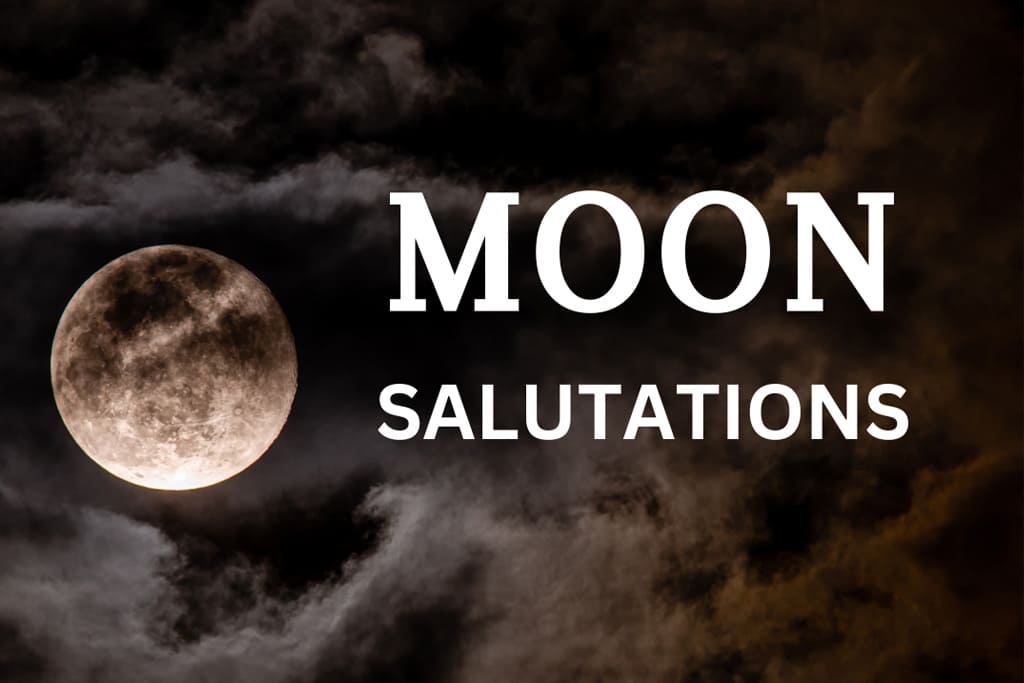
Introduction: The Essence of Moon Salutations
In our fast-paced lives filled with constant movement and activity, moon salutations offer a gentle and introspective practice that encourages us to slow down, turn inward, and embrace tranquility. By synchronizing our breath with mindful movements, we can create a harmonious flow that calms the mind, releases tension, and promotes a deep sense of relaxation.
Understanding the Significance of Chandra Namaskar
Moon salutations are deeply rooted in the ancient wisdom of yoga and Ayurveda, where the moon symbolizes feminine energy, receptivity, and the soothing qualities of the mind. Practicing moon salutations allows us to cultivate these qualities within ourselves, balancing the fiery and active nature of our daily lives with the cooling and soothing energy of the moon.
Preparing for Moon Salutations: Creating the Right Environment
Before diving into the practice of moon salutations, it is important to create a conducive environment that promotes serenity and relaxation. Find a quiet and clean space, free from distractions, where you can move freely without any obstructions. Consider dimming the lights or lighting candles to create a soft and calming ambiance.
Step-by-Step Guide to Moon Salutations
Step 1: Mountain Pose (Tadasana)
Begin by standing tall at the top of your mat, feet hip-width apart, and hands relaxed by your sides. Ground yourself, align your posture, and take a few deep breaths to center your focus.
Step 2: Half Moon Pose (Ardha Chandrasana)
Shift your weight onto your right foot and extend your left leg behind you. Reach your left arm towards the sky, creating a long line from your fingertips to your toes. Gaze up towards your fingertips and feel the stretch along your left side.
Step 3: Forward Fold (Uttanasana)
Lower your left hand down and fold your torso forward, allowing your fingertips or palms to touch the mat. Relax your head and neck, and let gravity deepen the stretch in your hamstrings and lower back.
Step 4: Low Lunge (Anjaneyasana)
Step your left foot back, lower your left knee to the mat, and slide your right foot forward. Place your hands on your right thigh and lift your torso, opening your chest and gently arching your back. Feel the stretch in your hip flexors and quadriceps.
Step 5: Standing Crescent Pose (Anjaneyasana Variation)
Inhale as you reach your arms overhead, interlace your fingers, and press your palms toward the sky. Lean gently to the right, feeling a stretch along the left side of your body. Hold for a few breaths, then repeat on the left side.
Step 6: Goddess Pose (Utkata Konasana)
Step your feet wider apart, turn your toes out slightly, and bend your knees, coming into a squat position. Bring your hands to your heart center, engage your core, and find stability and strength in this empowering pose.
Step 7: Triangle Pose (Trikonasana)
Straighten your right leg and turn your left foot out slightly. Extend your torso to the right and reach your right hand towards your right shin, ankle, or the floor. Extend your left arm up towards the sky, creating a long line from your left fingertips to your right fingertips.
Step 8: Wide-Legged Forward Fold (Prasarita Padottanasana)
Turn your toes forward and fold your torso forward, bringing your hands to the mat between your feet. Relax your head and neck, and allow your spine to lengthen as you deepen the stretch in your hamstrings and lower back.
Step 9: Garland Pose (Malasana)
Bend your knees deeply and bring your hands together at your heart center. Press your elbows against the inner part of your knees, opening your hips and maintaining a steady breath.
Step 10: Wide-Legged Forward Fold with Twist (Parivrtta Prasarita Padottanasana)
Place your left hand on the mat beneath your face, and lift your right hand towards the sky, twisting your torso to the right. Feel the twist in your spine and the gentle opening of your chest.
Step 11: Low Lunge Twist (Parivrtta Anjaneyasana)
Step your right foot back, lower your right knee to the mat, and slide your left foot forward. Place your left hand on the mat inside your left foot, and reach your right arm towards the sky, twisting your torso to the left. Explore the gentle twist and its effect on your body.
Step 12: Half Moon Pose (Ardha Chandrasana Variation)
Shift your weight onto your left foot and extend your right leg behind you. Reach your right arm towards the sky, creating a long line from your fingertips to your toes. Gaze up towards your fingertips and feel the stretch along your right side.
Step 13: Forward Fold (Uttanasana)
Lower your right hand down and fold your torso forward, allowing your fingertips or palms to touch the mat. Relax your head and neck, and let gravity deepen the stretch in your hamstrings and lower back.
Step 14: Half Moon Pose (Ardha Chandrasana Variation)
Shift your weight onto both feet and extend both legs behind you, keeping them straight. Reach your arms overhead and lengthen your spine as you feel the stretch along both sides of your body.
Step 15: Mountain Pose (Tadasana)
Inhale deeply as you roll up to a standing position, stacking each vertebra one at a time. Stand tall, feeling grounded and centered.
Benefits of Moon Salutations
Moon salutations offer numerous benefits for both the body and mind. Here are some key advantages of incorporating moon salutations into your yoga practice:
- Relaxation and stress relief: Moon salutations help calm the mind, release tension, and reduce stress.
- Flexibility and strength: The sequence gently stretches and strengthens the entire body, promoting flexibility and muscle tone.
- Balance and stability: By practicing various standing poses, moon salutations enhance balance and stability.
- Hormonal balance: Moon salutations are believed to have a positive impact on the endocrine system, promoting hormonal balance.
- Mindfulness and introspection: The slow and mindful movements of moon salutations encourage introspection, self-awareness, and a deep connection with oneself.
Conclusion
Moon salutations, or Chandra Namaskar, offer a serene and introspective yoga practice that allows us to embrace the soothing energy of the moon. By incorporating this sequence into our routine, we can find balance, tranquility, and a deeper connection with ourselves. So, step onto your mat, honor the moon’s gentle presence, and embark on a journey of serenity and self-discovery.
Frequently Asked Questions:-
Can I practice moon salutations at any time of the day?
Yes, you can practice moon salutations at any time of the day. However, they are particularly beneficial in the evening or at night to help calm the mind and prepare for restful sleep.
Do I need prior yoga experience to do moon salutations?
Moon salutations can be practiced by individuals of all levels, including beginners. It is advisable to start slowly, listen to your body, and modify the poses as needed.
How many rounds of moon salutations should I do?
You can start with a few rounds and gradually increase the number as you become more comfortable with the sequence. Listen to your body and practice within your limits.
Are there any modifications for beginners?
Yes, beginners can modify the poses by using props such as blocks or straps to support their practice. They can also focus on gentle movements and shorter holds in each pose.
Can I practice moon salutations during pregnancy?
It is important to consult with your healthcare provider before practicing moon salutations or any other physical activity during pregnancy. They can provide guidance based on your specific needs and trimester.

